Photographs: Ministry of Defence Ajai Shukla & Sonia Trikha Shukla
The Chinese intrusion into Indian territory in Ladakh seemed to be a trial balloon for dealing with troublesome Indian positions
Even for the most intrepid helicopter pilots of the Indian Air Force, flying a sortie to the desolate outpost of Daulat Beg Oldi on the Line of Actual Control with China has always meant pushing the limits.
Wing Commander Abdul Hanfee, who had won a Vir Chakra for his devil-may-care flying in Siachen, would take off from the Siachen Base Camp with his Mi-17 helicopter loaded with rations and fuel and set course for Saser La, the 17,753-foot pass on the Karakoram range.
With the helicopter rotors shuddering as they clawed through the thin air, Hanfee would look down from his cockpit as he flew over the pass still littered with the bones of camels, ponies and human wayfarers -- the detritus of a bygone era when arbitrary frontiers had not disrupted the centuries-old patterns of trade and connectivity.
This was the Old Silk Route that connected Ladakh and Kashmir with Xinjiang -- now, like Tibet, an "autonomous region" of China.
Well into the 20th century, camel caravans laden with silk, jade and hemp would set out from Yarkand and Khotan in East Turkestan to Leh and Kashmir from where they would bring back Pashmina wool, saffron, tea and calligraphy.
...
Without road links to the rest of Ladakh, DBO remains an isolated enclave
Image: Map depicting the location of Daulat Beg OldiPhotographs: Google Maps
After crossing the Karakoram Pass into India, the traders would leave their camels at Daulat Beg Oldi and transfer their goods onto pack ponies for the cruel journey over Saser La into the more hospitable Shyok river valley that led on to Leh, Turtok or Srinagar.
This isolation has defeated even the Border Roads Organisation which has laboured for over a decade, so far unsuccessfully, to build an all-weather road over Saser La that will connect Daulat Beg Oldi (or DBO, in military phraseology) with Leh, Partapur and Kargil. BRO has failed equally in bringing another road northwards to DBO from the Pangong Tso Lake, along the Indian side of LAC.
Without road links to the rest of Ladakh, DBO remains an isolated enclave across the Karakoram and Ladakh ranges, dependent upon IAF for food, fuel, ammunition and quick troop replenishments.
Going there on foot involves an exhausting five-day march at altitudes that would exhaust an ibex. The military calls this enclave Sub-Sector North (SSN) and regards it as crucial for the defence of Siachen and Leh.
According to Lt Gen Kamleshwar Davar, a former commander of 3 Infantry Division, under which this area comes, "If the Chinese were to come up to Saser La, our control over the Siachen Glacier would be seriously compromised since Saser La overlooks that area. SSN provides a protective buffer to the Siachen sector and also provides depth to the northeastern approaches to Leh. It is our land access to Central Asia, along the Old Silk Route through the Karakoram Pass."
...
Driving out the Chinese incursion at DBO would hardly be a problem, but...
Image: The Chinese camps in question at DBONow, India's control over SSN is being challenged by the increasingly assertive presence of the People's Liberation Army. On April 15 the Indo-Tibet Border Police, which holds and patrols SSN, discovered four Chinese tents pitched on a flat area called the Depsang Plain, with 30-40 uniformed Chinese personnel in the camp well inside the Indian side of LAC.
New Delhi was informed and the ministry of external affairs contacted the Chinese foreign minister to activate a joint consultative mechanism that was set up in 2011 to resolve border incidents like this one.
In three flag meetings held on April 18, 23 and 30, PLA has conveyed a simple message: its patrol has not violated LAC; but it will withdraw if the Indian Army dismantles bunkers that it has built in two places near Chushul, in southeastern Ladakh.
The two sides eventually reached an agreement on May 5 with both sides deciding to pull back their troops simultaneously from the face off point, which was completed at 1930 hours. However, it was not clear whether the Chinese would withdraw all the way back across the LAC to the position that obtained on April 15 as was demanded by India which pressed for restoration of status quo ante.
"PLA has carefully chosen its spot. Along the entire 4,057 kilometres of LAC, India is most isolated at DBO, being entirely reliant on airlift. In contrast, PLA can bring an entire motorised division to the area within a day, driving along a first-rate highway," says Major General Sheru Thapliyal, also a former 3 Division commander. Beijing has made it clear that it has demands that must be met before it withdraws.
Army sources protest that the Indian bunkers that China wants dismantled are deep on our side of LAC, on the western bank side of the Indus, an area that China has never claimed even at its most acquisitive. Driving out the Chinese incursion at DBO would hardly be a problem, say top Indian commanders; a battalion, with adequate fire support, could do this within minutes.
But the Chinese are better placed for a build-up and would retaliate strongly.
...
China is making its disapproval felt over India's border build-up
Image: External Affairs Minister Salman KhurshidPhotographs: Press Information Bureau
Besides, military action would dramatically escalate tensions all along LAC, which has remained uniformly peaceful since the two countries signed the "Agreement on Peace and Tranquillity" in 1993. A series of tit-for-tat incursions all across LAC would create a second active border for India to man around the year.
Last Tuesday, Defence Minister AK Antony talked tough, suggesting that force would be employed if needed to safeguard Indian territories.
But New Delhi's top national security policymakers were not inclined to initiate a military confrontation with China, howsoever limited. That left the government with little choice other than diplomatic negotiations during two forthcoming high-level political meetings: Foreign Minister Salman Khurshid will visit Beijing on Thursday, and China's new premier, Li Keqiang, is scheduled to visit New Delhi later this month.
Srikanth Kondapalli, a China expert in the Jawaharlal Nehru University, believes that China was under pressure to resolve the crisis during Khurshid's visit to Beijing, since it needed to create the right atmosphere for Keqiang's visit.
"Beijing remembers that President Hu Jintao's visit in November 2006 had been vitiated after China's ambassador to India, Sun Yuxi, had declared before the visit that the whole of Arunachal Pradesh was a disputed region," says Kondapalli.
At the root of the crisis is the obvious unease in the Chinese security establishment at India's border build-up, especially the surge in military deployment and infrastructure over the last five to seven years.
Like earlier occasions when the Indian Army enhanced its presence on the border, this time too China is making its disapproval felt.
...
India's traumatic past with China
Image: An Indian post at the LAC in 1962Photographs: Ministry of Defence
New Delhi first became conscious in the 1950s of the need to establish a military presence along India's claim lines in Ladakh and the North East Frontier Agency (NEFA, now Arunachal Pradesh).
Prime Minister Jawaharlal Nehru ordered a high-powered committee, presided over by Deputy Defence Minister Major General MS Himmatsinghji, to study the problems created by China's occupation of Tibet. It made the crucial (and still ignored) recommendation that military posts should move forward to India's claim lines in tandem with the simultaneous development of administration, road communications and local infrastructure.
Instead, after belatedly discovering in 1957 that China's newly built Western Highway from Tibet to Xinjiang ran for nearly 200 kilometres through the India-claimed Aksai Chin, a high altitude desolation that DBO is an extension of, New Delhi threw troops pell-mell into these unknown areas in what was known as the "Forward Policy".
Beijing's insecurities were exacerbated by the suspicion that India was backing the Tibetan uprising.
Apprehension turned into animosity when New Delhi granted the Dalai Lama and the Tibetan refugees asylum in India in 1959.
The Indian move forward thus degenerated into war by 1962. A much better prepared and equipped PLA easily overran Indian territory down to the plains of Assam.
It took a traumatised India 20 years to decide to reoccupy the China border again.
...
The current crisis was triggered by India's third border build-up
Image: A hoarding along the India-China border at TawangIn 1975, General KV Krishna Rao submitted an "Experts Committee" report that called for a larger number of troops to defend the borders and for better roads to support their logistics.
As the Chief of Army Staff from 1981 to 1983, he persuaded Prime Minister Indira Gandhi that 20 years of fearful holding back had to end.
In 1983, the army moved forward again, deploying in strength in Tawang and Chushul.
This led to trouble again. In 1986, a Chinese patrol pitched up tents in a disputed area called Wangdung, north of Tawang.
A furious retaliatory build up by the Indian Army almost ended in actual hostilities, but tensions were resolved.
Diplomatic engagement led to Rajiv Gandhi's 1988 visit to China. During Prime Minister P V Narasimha Rao's visit to Beijing in 1993, the two countries signed an "Agreement on the Maintenance of Peace and Tranquillity along the Line of Actual Control in the India-China Border Area," which has led to the largely peaceful border of today.
The current crisis was triggered by India's third border build-up.
...
Of greater concern to Beijing is the growing Indian capability in Ladakh
Image: The Nyoma Advanced Landing GroundPhotographs: Ministry of Defence
Starting from the mid-2000s, New Delhi sanctioned two mountain divisions to defend Arunachal Pradesh; and IAF activated three Sukhoi-30 fighter bases in Assam along with several units of Akash air defence batteries.
Eight Advanced Landing Grounds have been refurbished, permitting forward replenishment and heli-borne operations. In the works is an even greater capability in the northeast, with an armoured brigade and a mountain strike corps scheduled to take the field by 2017.
Of apparently greater concern to Beijing is the growing Indian capability in Ladakh. India has moved at least two additional infantry brigades into southeastern Ladakh and an armoured brigade will become operational by 2017. ALGs have been activated in Nyoma, Fukche and DBO.
China's discomfort with all this was conveyed last month when Beijing handed New Delhi a draft proposal to freeze troop levels and defences on LAC, institutionalising India's disadvantage.
While such an agreement would cap the Indian build-up, the intrusion at DBO seemed to be a trial balloon for dealing with troublesome Indian positions that already exist. And if this worked, this method can be invoked in other sectors as well.
...
The Indian Army finds its operational options constrained by logistics
Image: Chinese soldiers put up a flag atop their border postPhotographs: Rupak De Chowdhuri/Reuters
The Indian Army finds its operational options constrained by logistics.
China has understood that a comprehensive road network is the final arbiter of power in high-altitude mountainous terrain.
India has more troops on the border but, without a road network, the rugged Himalayas reduce those impressive divisions to isolated groups of soldiers sitting on widely separated hilltops.
P Stodan, a former Indian ambassador who is from Ladakh, points out, "Around Ladakh, the Chinese can move troops at 400 kilometres a day. We can do leisurely 150-200 kilometres if we are lucky."

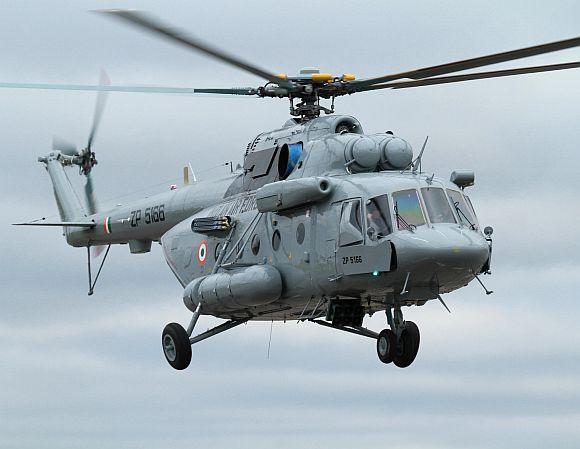
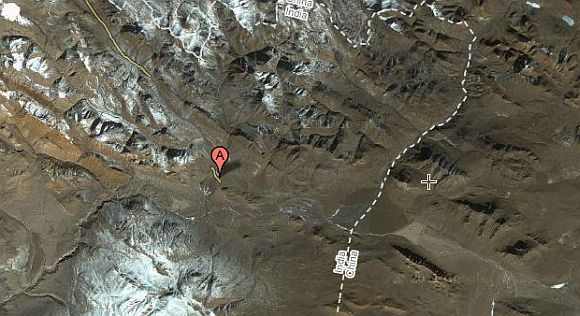


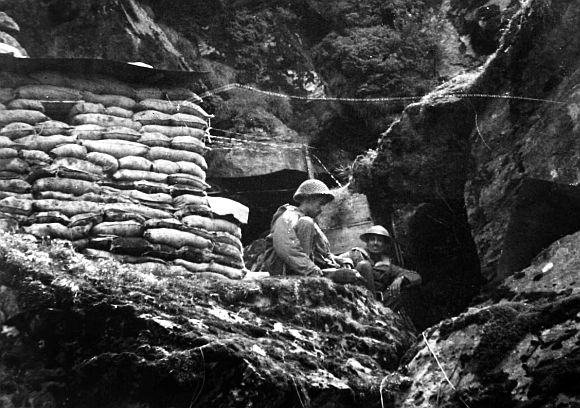
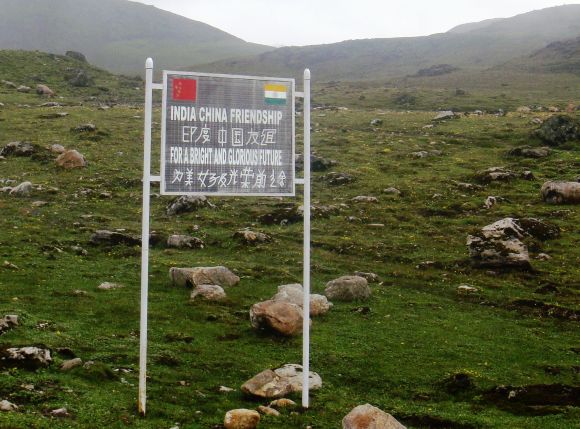
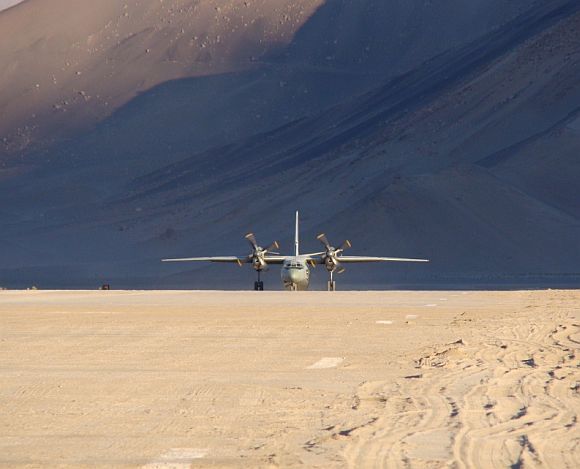
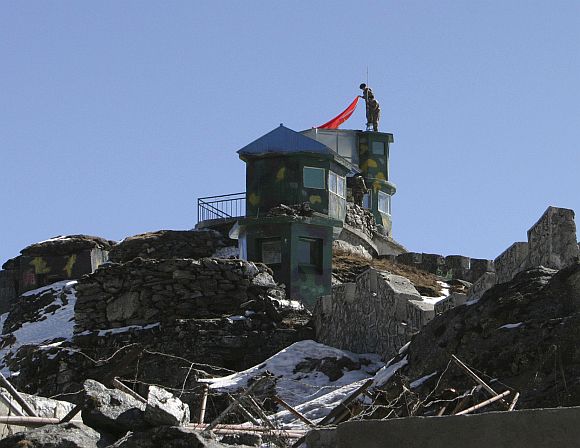

article